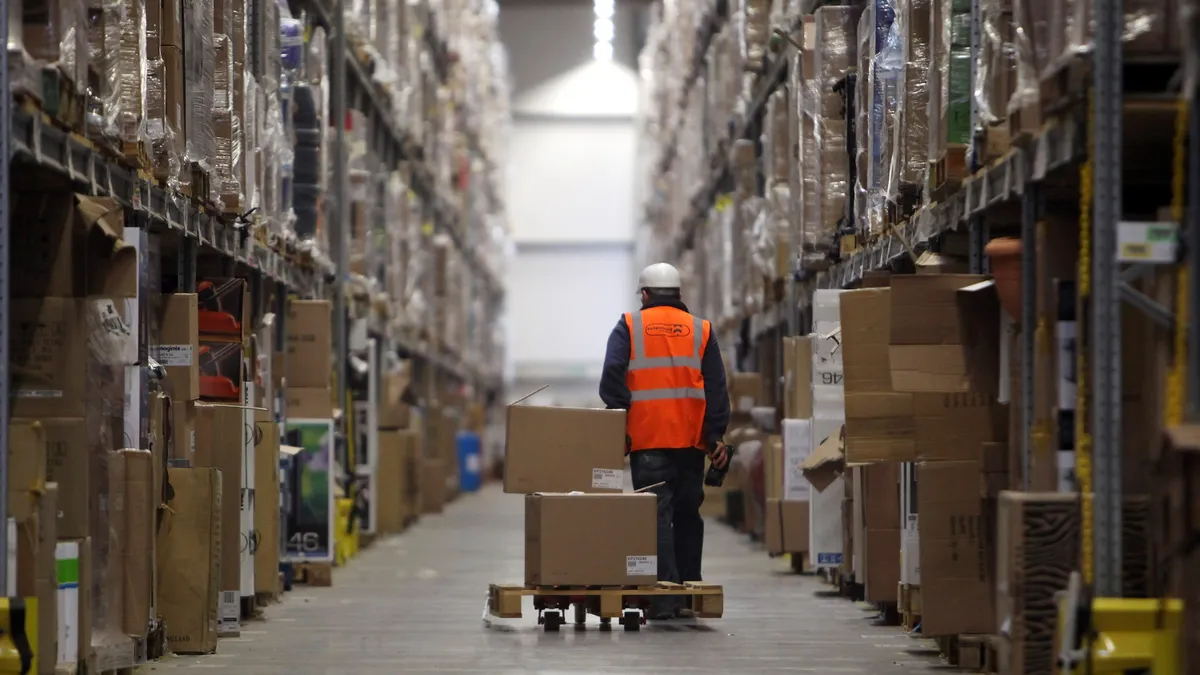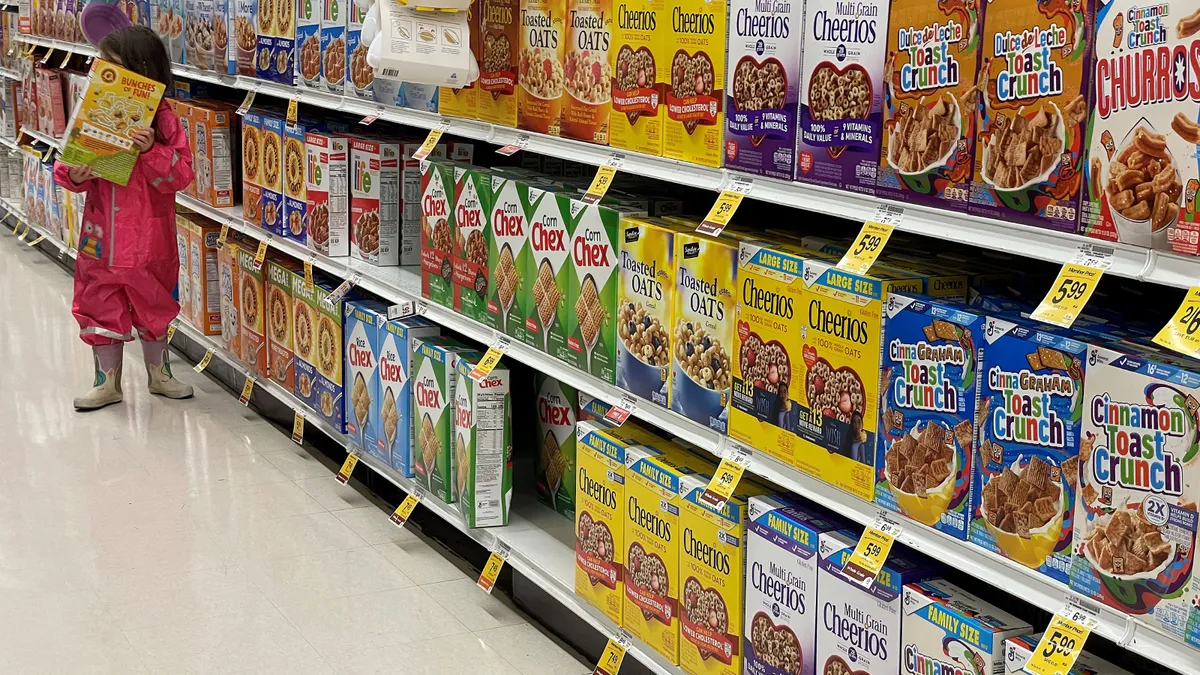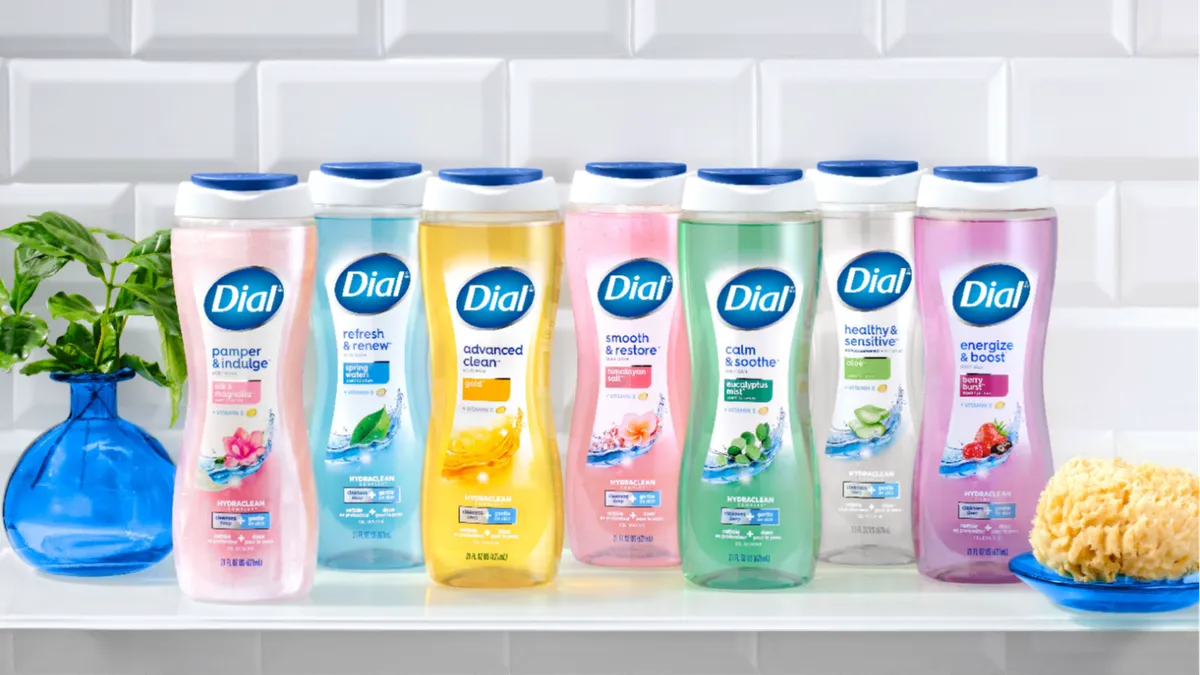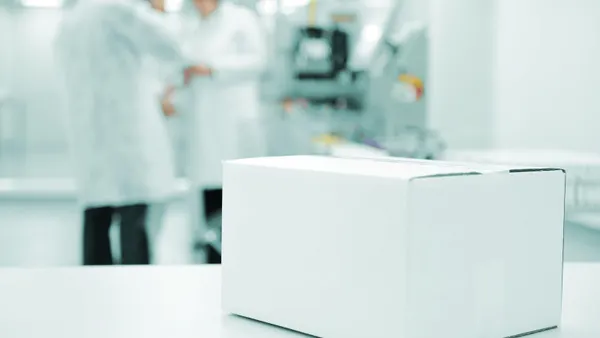Even if the social distancing and vaccination campaigns that marked the early pandemic have largely faded, some 2020 shifts — namely, what kinds of packaging and envelopes brought online purchases to American doorsteps — are sticking around.
A 2022 report from the U.S. Census Bureau found that the value of e-commerce sales rose 43% in 2020. In that year, and in 2021, the number of packages moving through shipment systems had a compound growth rate hovering above 20%, said Jon Moss, a managing director and partner at L.E.K. Consulting. “That’s a huge surge in relative growth of parcels.”
How people decided their purchases would arrive at their homes had ramifications through the entire shipping logistics system. Typical concerns for online sales grew in magnitude, so addressing them became a more prominent part of packaging designs.
It’s easy to tell the difference between a pallet bound for a brick and mortar store and one serving e-commerce, said Jorge Izquierdo, vice president of market development with the Association for Packaging and Processing Technologies (PMMI).
The former are perfect cubes, often made of a single item that will shift to a display shelf before in-person shoppers select their purchases. E-commerce demands different configurations. “It is kind of a random set of boxes in a pallet that are going to go to any specific distribution method,” Izquierdo says.
A rise in online shopping means a rise in shipments that hold all the assorted purchases a shopper might have previously compiled into a physical shopping cart. This can create what Izquierdo calls a “box with a mix of problems,” like a single package holding soda cans alongside a carton of fragile cookies.
Higher e-commerce sales volumes and the added complications of the channel have pushed brands to revamp their containers in recent years. Of the brand and packaging managers that said they have e-commerce sales, 86% said they altered packaging for items sold online, according to a 2022 survey from L.E.K. The firm, which solicited feedback from 421 individuals overseeing brands sold in the U.S., found the largest motivator for the reported changes was adapting for automated handling, which 39% of respondents said they did.
The choice tracks with the possibility that items sold online are more likely to have automated systems pulling the items from fulfillment center shelves, said Moss.
The second-largest reason for packaging changes was the need for better protection for individual items, which 38% of respondents agreed to. Unlike the secure, uniform cube of the retail outlet pallet, e-commerce orders are more apt to get jostled all the way to a buyer’s home. Avoiding the waste associated with a broken or leaking product, or making buyers upset with a brand, are some of the largest motivators behind damage-proof packaging, said Jeff Cloetingh, a managing director and partner at L.E.K.
That protection requirement has also made ships in own container (SIOC) solutions more popular. With the right design, a single package choice can withstand the turmoil of shipping and be attractive enough for product use. Children’s toys and electronics like TVs, for example, might appear at their destination in the exact box shoppers open to set up the gadget.
In unpublished results, the L.E.K. survey found that over 20% of respondents had redesigned containers so that tertiary packaging was eliminated, Cloetingh said. A separate 2020 PMMI survey found that 40% of respondents had at least explored shifting to SIOC.
How brands chose to sell their products online also shaped packaging trends in recent years. If a manufacturer makes sales through third parties like Amazon, they might adhere to guidelines like the “frustration-free packaging” the retailer offers. Those guidelines emphasize avoiding zip ties, clamshells and packaging added by the shipping giant, said Jonghun (Jay) Park, director of the Sustainable Packaging Research Lab and associate professor at Toronto Metropolitan University.
Direct-to-consumer shipping is also gaining popularity. A 2018 survey of brand manufacturers by PMMI found 28% had some form of direct-to-consumer sales. By the time of the 2020 survey, 66% of brands said they had adopted the sales format. In these cases, brands are interested in lightweight and efficient packaging that reduces shipping costs, whether it’s plastic envelopes or corrugated boxes, and that are a precise fit for their contents.
What kind of branding appears on a package has shifted with online retail, too. If a company has direct-to-consumer shipping, any secondary packaging has become a new opportunity for labels, inked designs or customized looks.
Meanwhile, Izquierdo said the contents in the package might lose the more intricate features — like see-through windows in a cardboard package — typically needed to entice in-person shoppers to put the item in their cart. Labeling was something 37% of L.E.K. survey respondents said they modified if they made recent e-commerce packaging changes.
More recent packaging adaptations have been accompanied by plans for more sustainable packaging — plans that often predate the pandemic. Nearly 47% of L.E.K. survey respondents said they changed packaging in the last two years to use more sustainable materials. Potential exceptions could include cold-chain packaging for high-value products like seafood or steak.
But those with 2025 sustainability goals have only accomplished 30% of those plans, while an even higher percentage said there are “significant gaps” in their ability to reach their targets.
A push toward more online selling means retailers are keen to avoid damaged goods. In addition to cost, that outcome can also lead to excess emissions when a product is manufactured, wrapped and shipped only for it to go directly into the trash or sent back through reverse logistics.
“In instances where we see participants in the market tactically electing to not go down the route of sustainable packaging, it does tend to be quite intentional and largely well-reasoned, particularly in this e-commerce niche,” Moss said.
Wanting to avoid product waste in online sales while meeting sustainability goals might not always be intuitive, Park said. Bulk food purchases, for example, surged early in the pandemic and are still popular as shoppers cope with inflation. But oversized packaging could lead to food waste, sometimes making smaller-scale portioning the more sustainable design.
In all cases, but particularly in cases where design choices geared towards sustainability or reduced emissions aren’t as obvious, sources said brands have room to improve on how well the choices are communicated to customers.
Traditionally, the information is shared via packaging designs or symbols, like a mark from the Forest Stewardship Council International, but QR codes or other smart packaging systems could become part of how brands share design choices or intended disposal methods in the future, Park said.
Even as brands try new packaging that meets e-commerce demands and sustainability expectations, Park said that figuring out how to tell shoppers why the brands make the choices they do remains a roadblock. “There’s no clear answer so far, but that is the gap at the moment.”
Izquierdo anticipates that all shipping package shifts induced by the pandemic have happened by now and it’s unlikely more will crop up over the next several months. The changes that have happened, however, were significant and will likely be long-lasting.





















